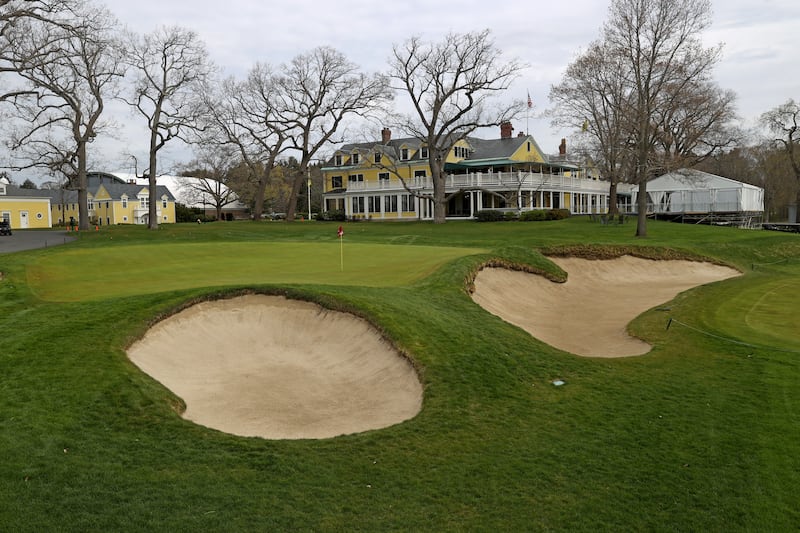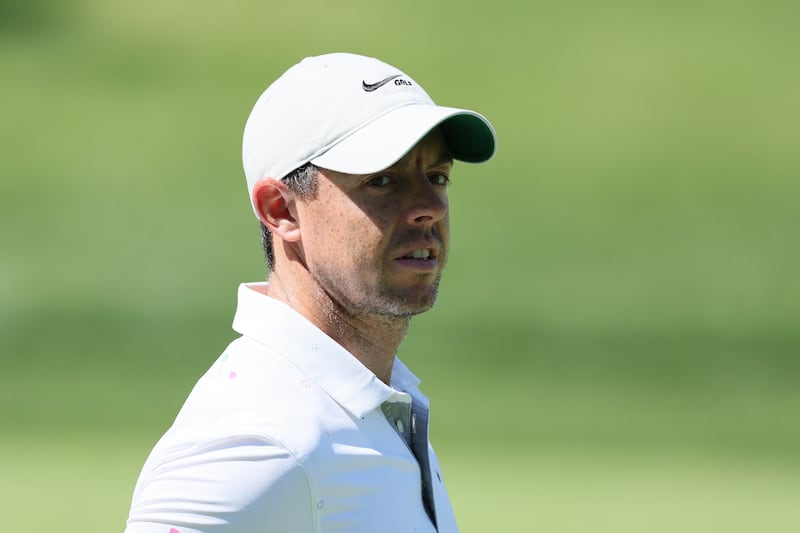The seismic changes to the professional golfing landscape can be brought back to some semblance of normality with next week’s 122nd edition of the United States Open Championship. With all kinds of fissures developing in recent months, weeks and days — due to LIV Golf’s flashy arrival which has disrupted the old guard, and especially fractured the PGA Tour’s status as the foremost circuit — the timing of the year’s third men’s Major could hardly be better timed.
As the USGA, who run the US Open, confirmed earlier this week, there will be no alterations to its qualifying criteria for playing in the championship at Brookline Country Club in Massachusetts. Although all four Majors are sanctioned as part of the PGA Tour (which has suspended players who have joined the start-up LIV Golf Series), they are not run by the main global tour.
Just as the Masters is run by Augusta National Golf Club, the US PGA by the PGA of America and the Open Championship by the R & , the US Open is run by the USGA which will allow for all those who qualified — regardless of their defections to LIV — to play and, perhaps, for everyone to draw breath and to focus on golf at its purest.
That everyone who has deserved the right to tee up at Brookline next week will be there — through many of the qualifying criteria, from being a past champion to being inside the world’s top 60 at the cut-off date or getting there via other means, including sectional qualifying or off the special mini order-of-merit on the DP World Tour — provides an opportunity for golf to get back to its historical lines.
READ MORE
After all, Brookline was the setting for one of the most magical of all golfing stories, when young amateur Francis Ouimet — who lived across the road from the club — defeated Ted Ray and Harry Vardon in a playoff for the 1913 US Open that became the subject matter for Mark Frost’s best-selling book, The Greatest Game Ever Played, which was subsequently turned into a movie of the same title.

But Brookline’s storied past goes beyond the romanticism of Ouimet’s underdog success. In all, the club in the western suburbs of Boston has played host to three US Opens — Julius Boros winning in 1963 and Curtis Strange in 1988 — which, as it happened, all went to playoffs.
The venue was also host to the 1999 Ryder Cup which played its way into the folklore of that biennial match between the USA and Europe for the manner of the American final day comeback which led to it being tagged as the “Battle of Brookline”. That Ryder Cup turned when Justin Leonard sank a long putt on the 17th green in his duel with Jose Maria Olazábal, which resulted in his team-mates storming on to the putting surface whilst Olazábal lined up his own putt.
The US Open’s return to Brookline for the first time in 34 years brings the championship back to a classic parkland course that fits in so well with the USGA’s own mission statement, “to make the US Open the most rigorous, yet fair, examination of shot skills, testing all forms of shot-making”.
The course numbers physical features of rocky terrain throughout. As Gil Hanse, the architect who has worked with the club on renovations in advance of this fourth US Open to be staged there, observed: “You can’t talk about the Country Club without mentioning the landforms, the ledges and the puddingstone rock ... it’s a completely different landscape than any place I’ve been, and since they couldn’t manipulate it dramatically [when originally designed given the engineering machinery available], they had to utilise the features in their design, which results in some of the unique and interesting holes ever.”
He added: “It’s brilliant what they came up with, given the constraints they had. There’s a real juxtaposition between these large landforms with fairways weaving through them, but you’re almost always terminating in a tiny green. They’re certainly the smallest greens we’ve worked on. It’s quite interesting, quite different.”
In actual fact, for the championship, a composite course is in play. The Country Club has 27 holes on its property and the USGA is using 14½ holes from the main course and three and a half from the Primrose 9. In all, the course will play to a length of 7,264 yards to a Par 70 (35-35). The driving range in use is an area that is made up of the normal ninth and 10th holes on the main course.
On taking on the task of restoring the course, Hanse at the time remarked: “It’s always been our formula to be respectful of the original architect’s vision. That’s been the keystone of the success that we’ve had with these restoration projects ... we had to look at this great, classic golf course and to figure out, ‘How do we update it without taking away the character, the beauty and the tradition of it?’”

One of the ways, it transpired, was to create a completely new hole. The 131-yards downhill Par 3 that was created will serve as the 11th hole of the US Open course (it can play as short as 105 yards or as long as 142 yards) and the USGA will, at some point in the championship, use that length differential on consecutive days.
The other significant change is the 14th hole, which was previously a Par 4 but which has been extended to 619 yards and will play as a Par 5. “It’s a pretty legitimate three-shot hole [to reach],” said Jeff Hall, the USGA’s championship director.
The most recent changes are a marrying of new with old but retaining the original design concept and challenges. The golf holes at Brookline have feature a number of influences, from a rudimentary layout by the club’s professional Willie Campbell to work carried out in the 1920s (with the purchase of an additional 22 hectares) when the acclaimed designer William Flynn designed the Primrose 9 and also did some work on the original 18 holes.
When Hanse started his restoration work, he used photographs from the 1934 US Amateur as a guide. “It was the earliest quality photography that was available. The Country Club has undergone a lot of phases, and the original 18 were not Flynn, but he made some alterations to bunker style and presentation. We were also able to get a good record of what the green complexes looked lie, in scale and shape. Golf courses are never truly complete, but we felt like the entire property had been brought together.”
So it is that the US Open’s return to Brookline will provide a traditional challenge, one broadly unaffected by the shenanigans playing out in the wider world of men’s professional golf.

Irish players in the field
Rory McIlroy
Age: 33
World Ranking: 8
Best US Open finish: 1st (2011)
Major finishes this year: Masters (2nd), US PGA (8th)
Odds: 12-1
On growing to love the US Open:
“[The US Open] has been the Major the last few years that I’ve felt the most comfortable at. I don’t know if it’s just my style of game has evolved, being a bit more conservative off the tee. Maybe it’s something to do with the fact that Mike Davis doesn’t set the golf courses up, either. Not anything against Mike, I just seem to enjoy US Opens a little more than I used to. Look, I’m playing well and I know if I go and play my game at Brookline I’ll hopefully be in the mix come Sunday.”
Shane Lowry
Age: 35
World Ranking: 25
Best US Open finish: 2nd (2016)
Major finishes this year: Masters (3rd), US PGA (23rd)
Odds: 25-1
On seeking to add to his 2019 Open win:
“I’d love to win more Majors. But I don’t think that’s a given. I think that’s just kind of something that you need to go out and work towards, and if it comes your way, you need to take it. It’s one of those where you get four of them a year.”
Séamus Power
Age: 35
World Ranking: 41
Best US Open finish: Debut
Major finishes this year: Masters (27th), US PGA (9th)
Odds: 125-1
On working with Bob Rotella:
“I went to see him and it was great. He keeps it so simple, it’s almost frustrating at times because you go, ‘that can’t be it’ but it’s about doing less and I have the personality where I always want to do more. He’s changed my practice stuff a lot. I’ll give you a perfect example, my short game, I feel I need to be practising it loads and loads and loads but he was like, you go to the chipping green — I usually go to three flags, low, medium, high to each pin and he’s like, ‘if you hit all nine shots close to the hole, just leave’.”















